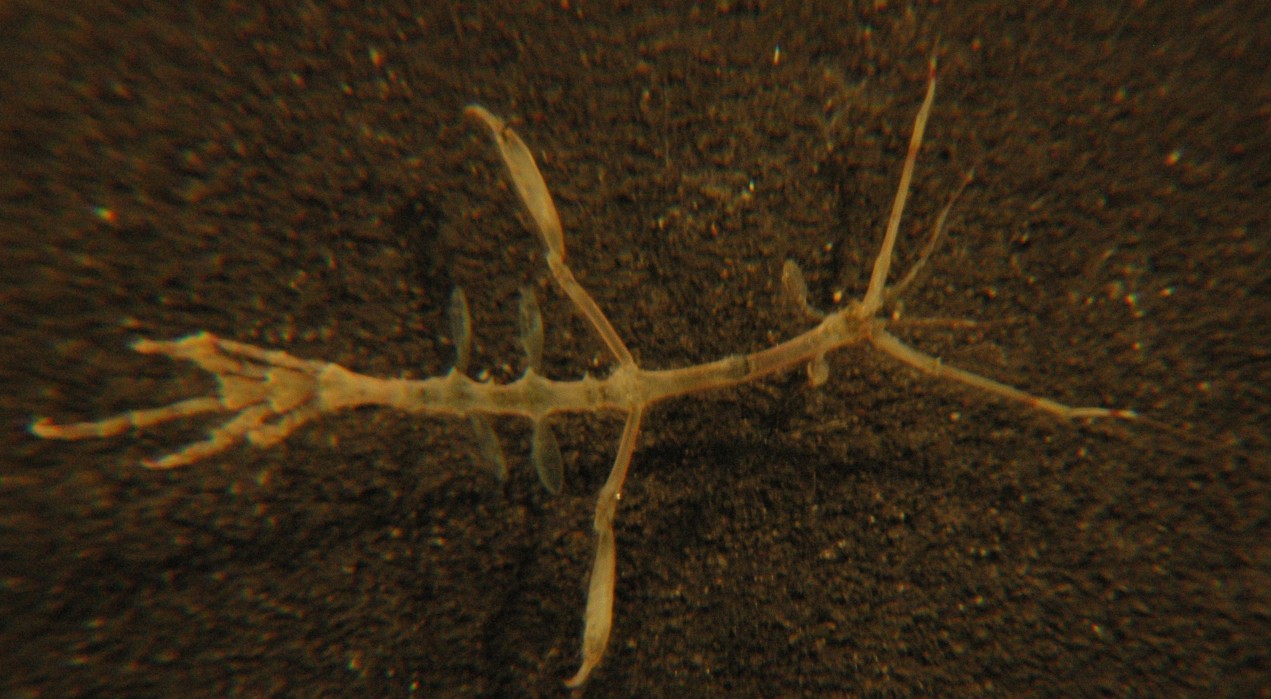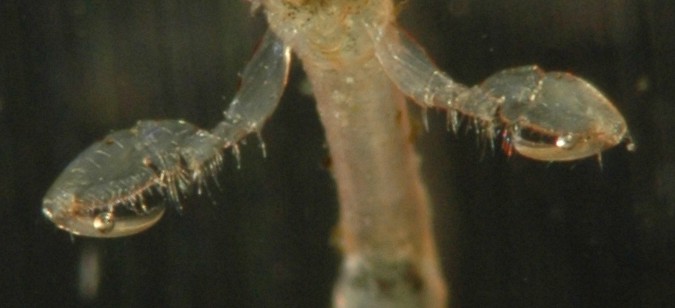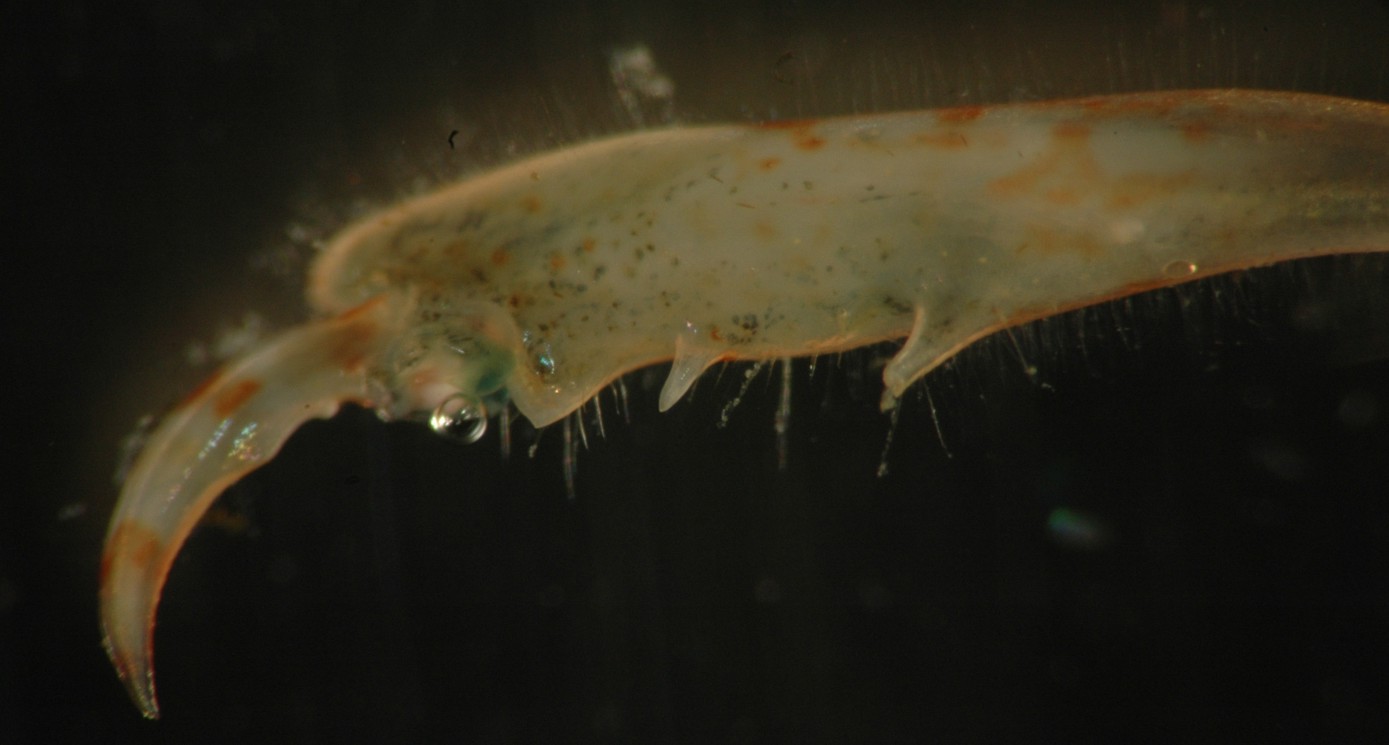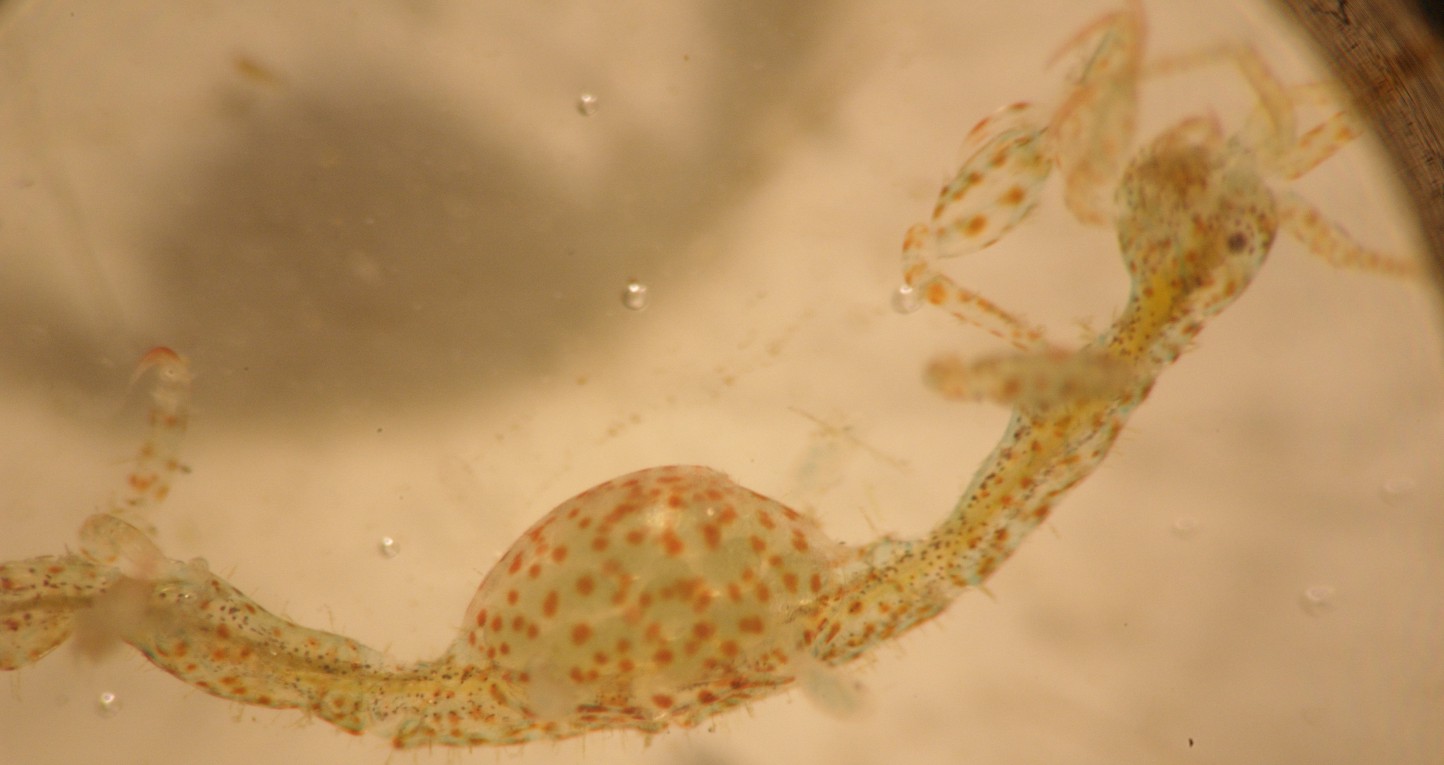How to Distinguish from Similar Species:Tritella laevis has a next-to-last article of antenna 2 only 4x as long as wide and its setae are not much longer than the article is wide. Mayerella banksia has 2 articles on its vestigialpereopods on pereonites 3 and 4.
Geographical Range:
Depth Range:
Habitat: Can be found on eelgrass
Biology/Natural History::
Caprellid
amphipods such as this species appear to be fearsome predators for
their
size. They hold onto substrates such as eelgrass or hydroids
with
their posterior appendages and wave their bodies around looking for
prey
to grab. They can move from place to place by grabbing the
new place
with their anterior gnathopods, then loosening their posterior legs and
moving them up to the new object to reattach..
| Return to: | |||
| Main Page | Alphabetic Index | Systematic Index | Glossary |
References:
Dichotomous Keys:Kozloff 1987, 1996
Smith and Carlton, 1975
General References:
Scientific Articles:
Web sites:
General Notes and Observations: Locations, abundances, unusual behaviors:
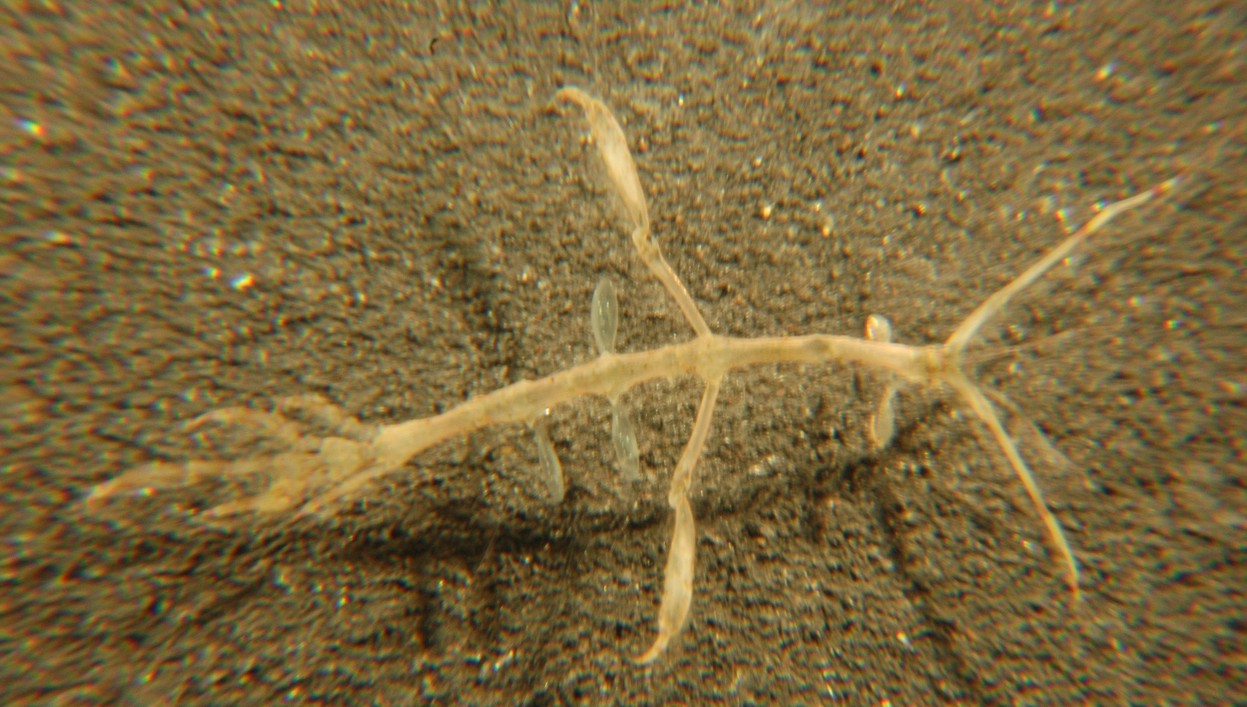
This view shows the same individual from the dorsal aspect.

In this ventral view of the anterior half of the body, the gnathopods
present at the anterior end of pereonite 1 and at the posterior end of
pereonite 2 are visible. It has no gills on either of these
pereonites.
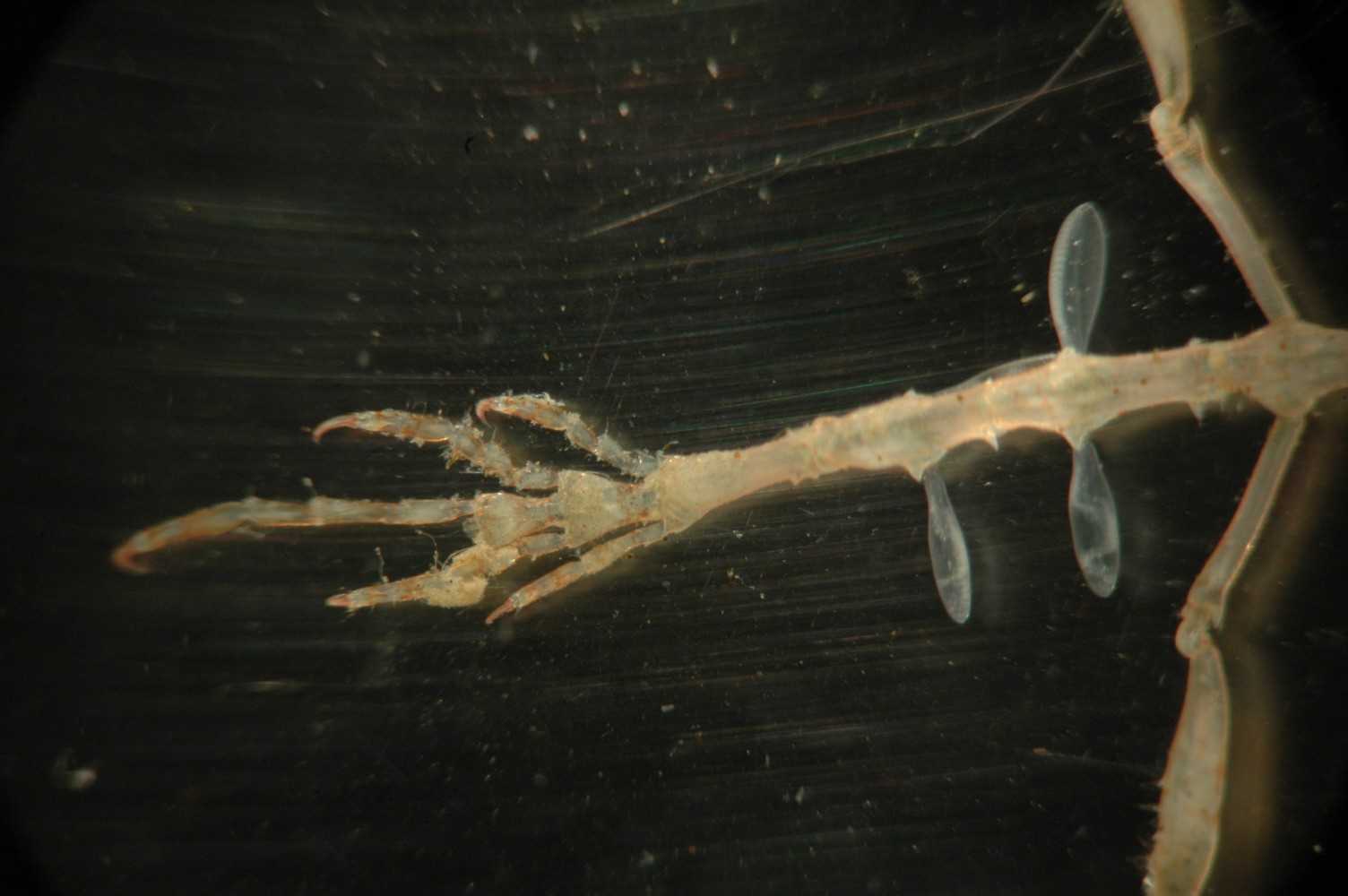
In this ventral view of the posterior half of the body (head is to
right), the flat leaflike gills can be seen on midsections of
pereonites
3 and 4 (part of the second gnathopods can be seen at the right on
pereonite
2). Ahead of each gill is a small bump which is the vestigial
pereopod
for that pereonite. Pereonites 5-7 on the left have
well-developed
pereopods which act as claws to attach the animal to the eelgrass.
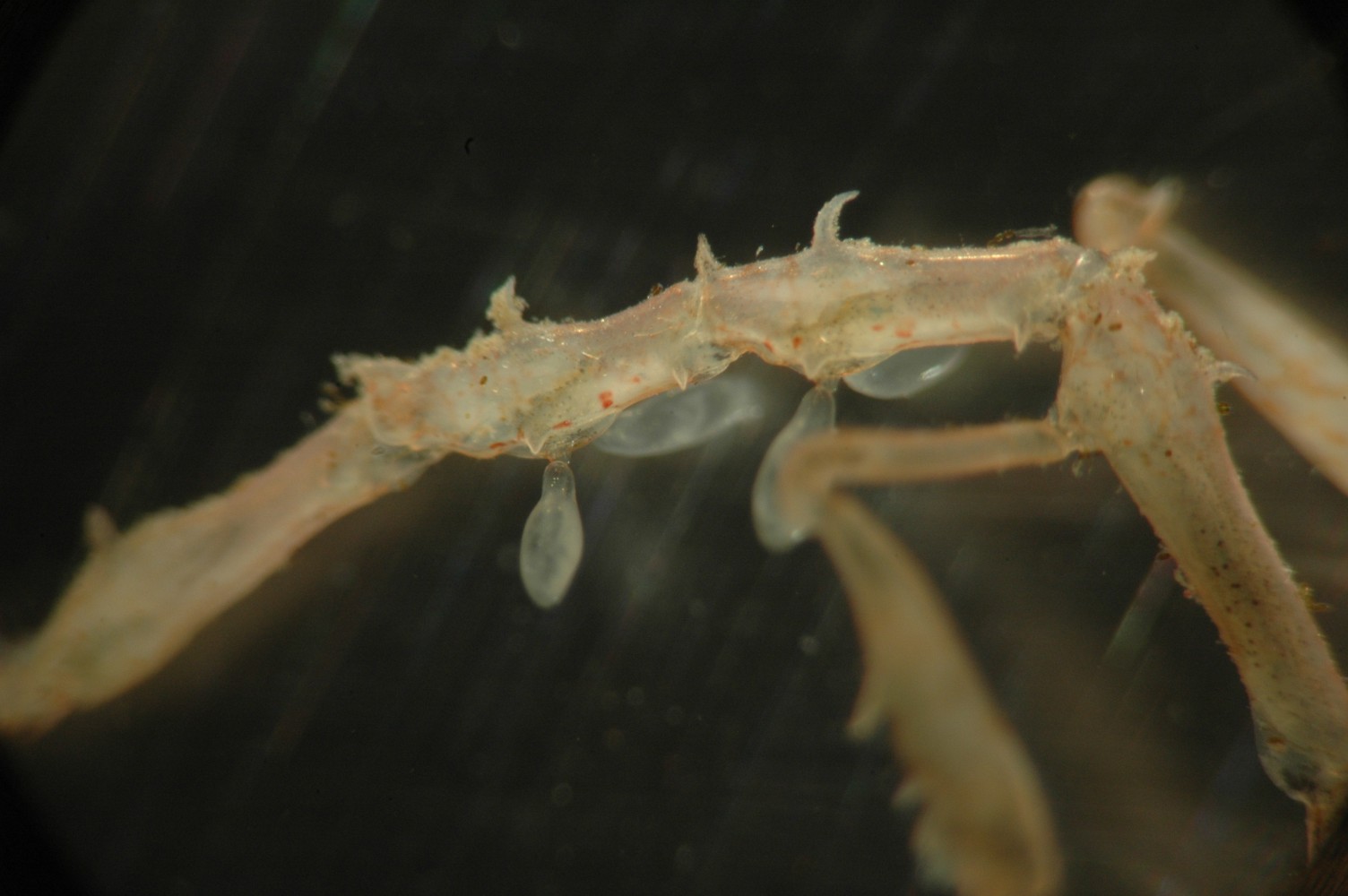
This view shows pereonites 3 and 4 closer up (the end of pereonite
2 with ghathopod 2 is visible to the right). On each of
pereonites
3 and 4 a small, 1-article vestigial pereopod can be seen projecting
from
near the front of the article and a leaflike gill projects from farther
back. Note the large dorsal, forward-directed spine on both
pereonite
3 and 4.
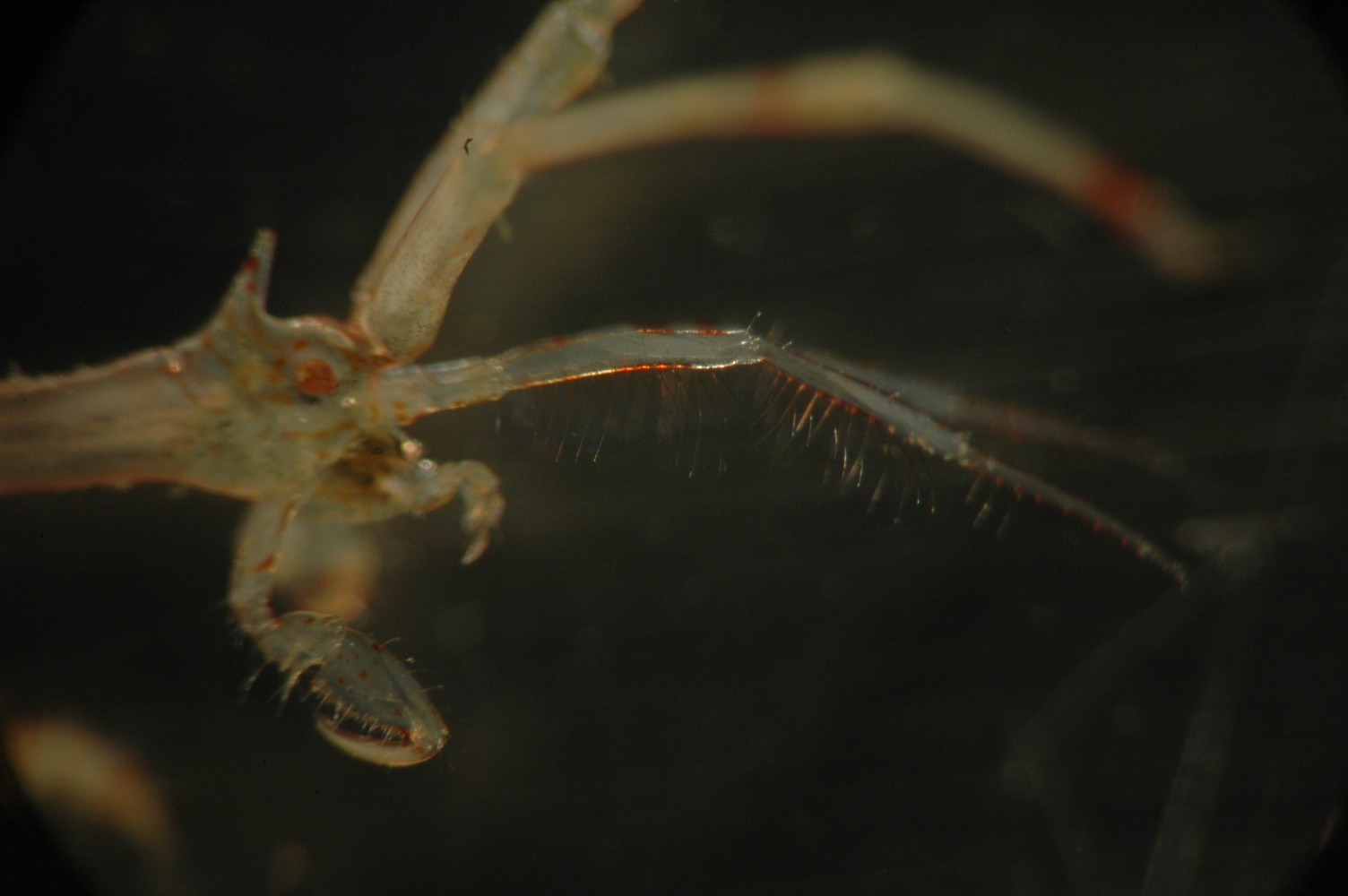
In this lateral view of the head and antennae 2, the long setae on
antennae 2 can be seen. The next to last article of antenna 2
is
about 6x as long as wide and has setae at least 2x as long as the
article
is wide.
Notice also the large, single dorsal spine on the head and the small
first gnathopods at the anterior end of pereonite 1. The
large first
antennae are extending upward out of the picture.
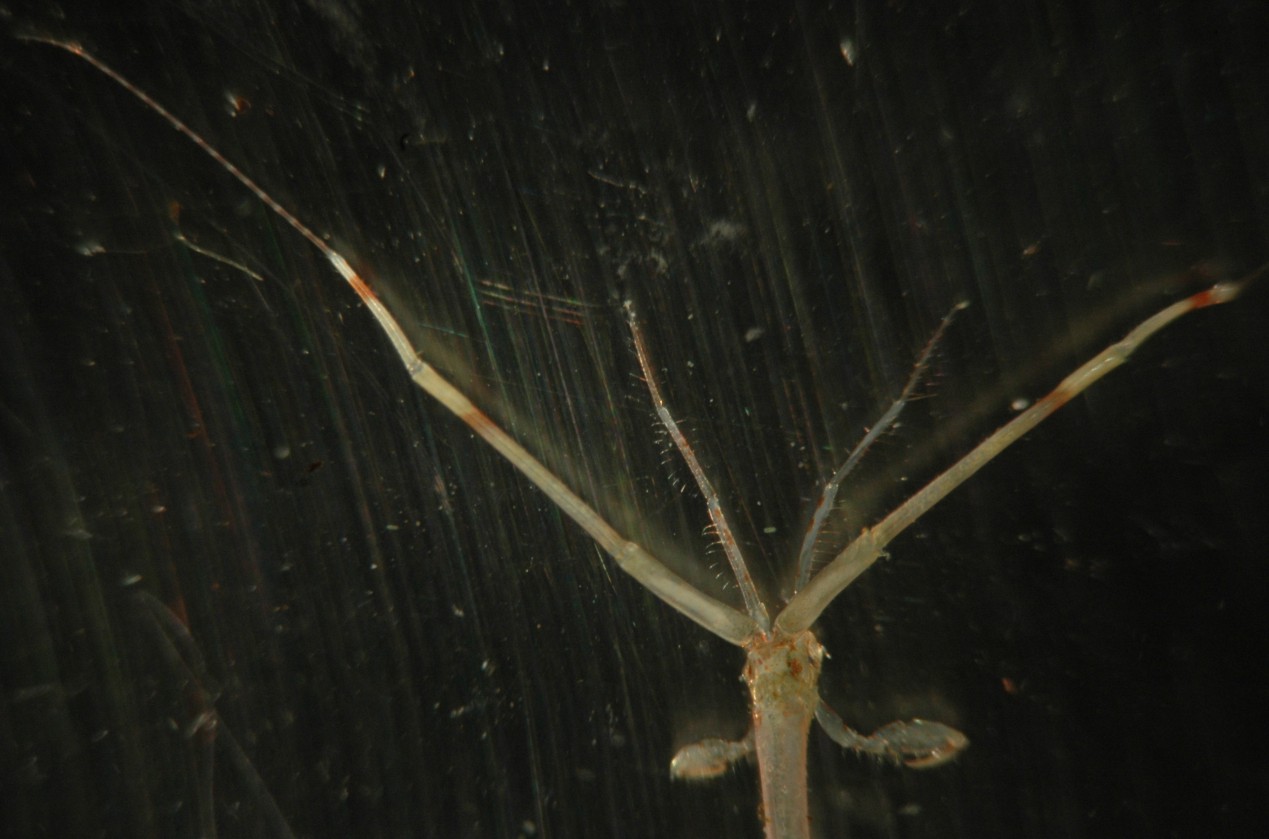
This dorsal view of the head shows more clearly the first and second
antennae.
This gravid female is carrying a clutch of eggs enclosed within flap-like oostegites on the ventral side of her thorax. Her total length is about 1 cm. Found on Ulva in Padilla Bay, June 21, 2012. Photo by Dave Cowles.
Authors and Editors of Page:
Dave Cowles (2007): Created original page
Jonathan Cowles (2007): Updated page with CSS
